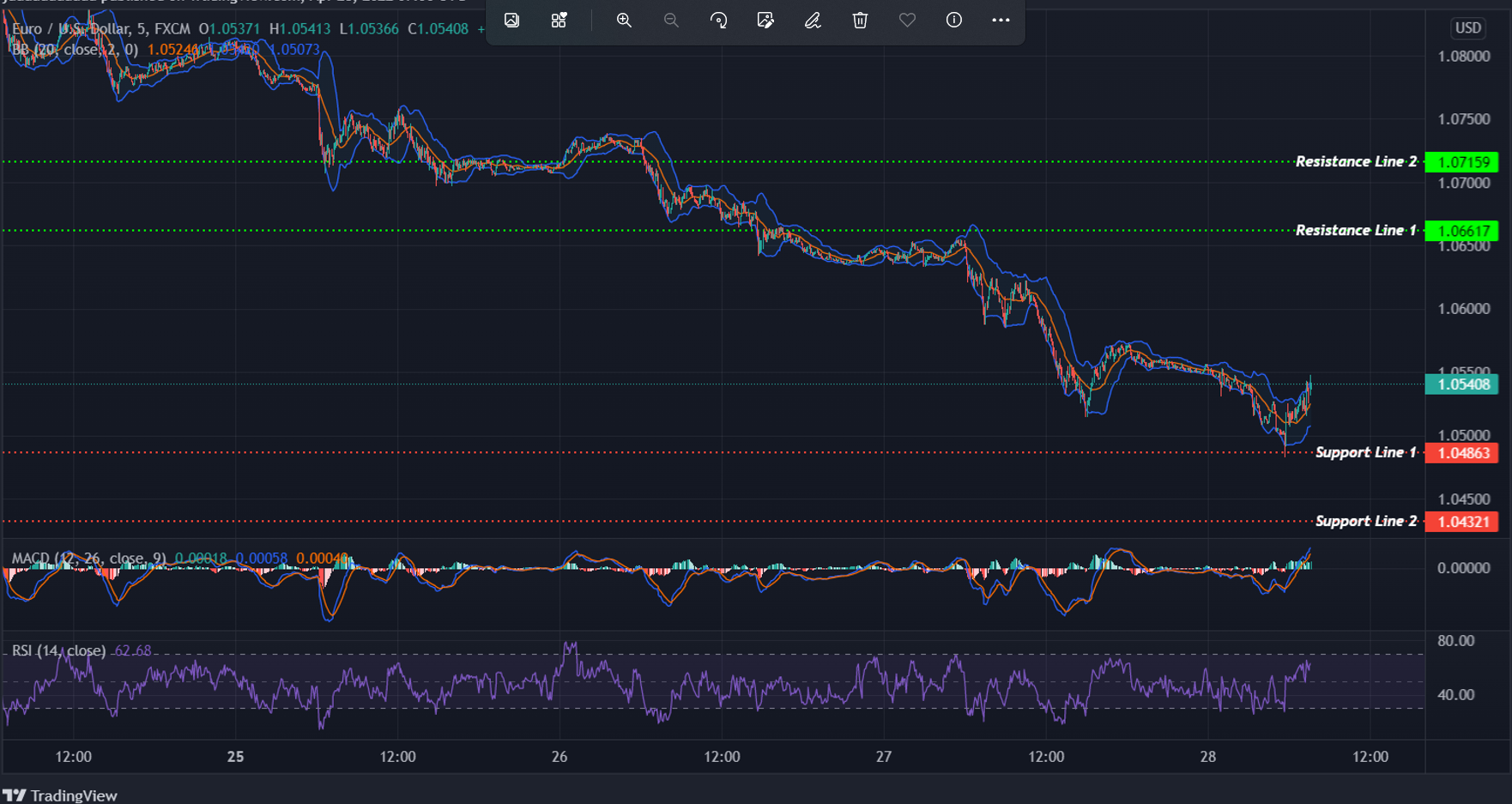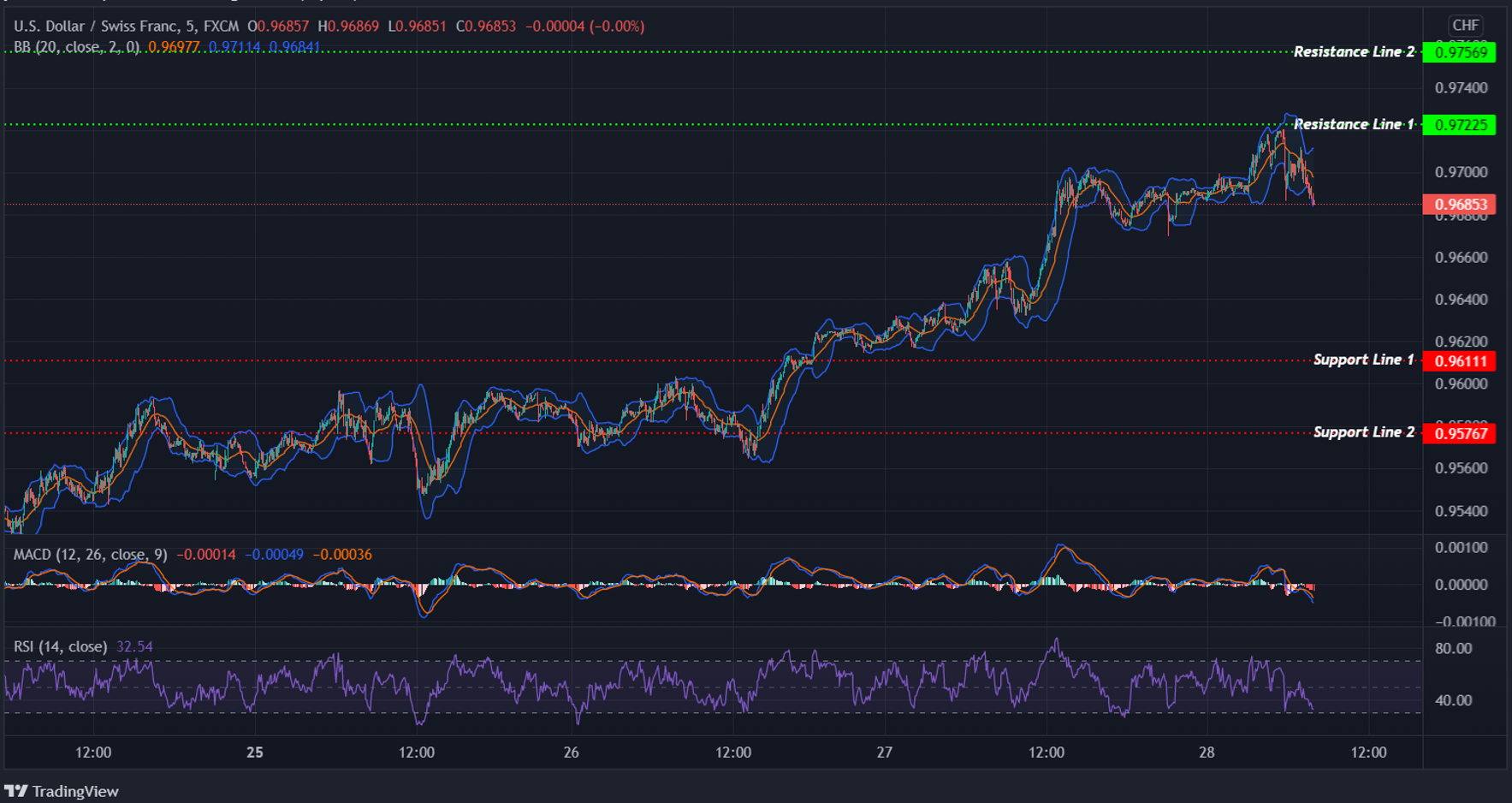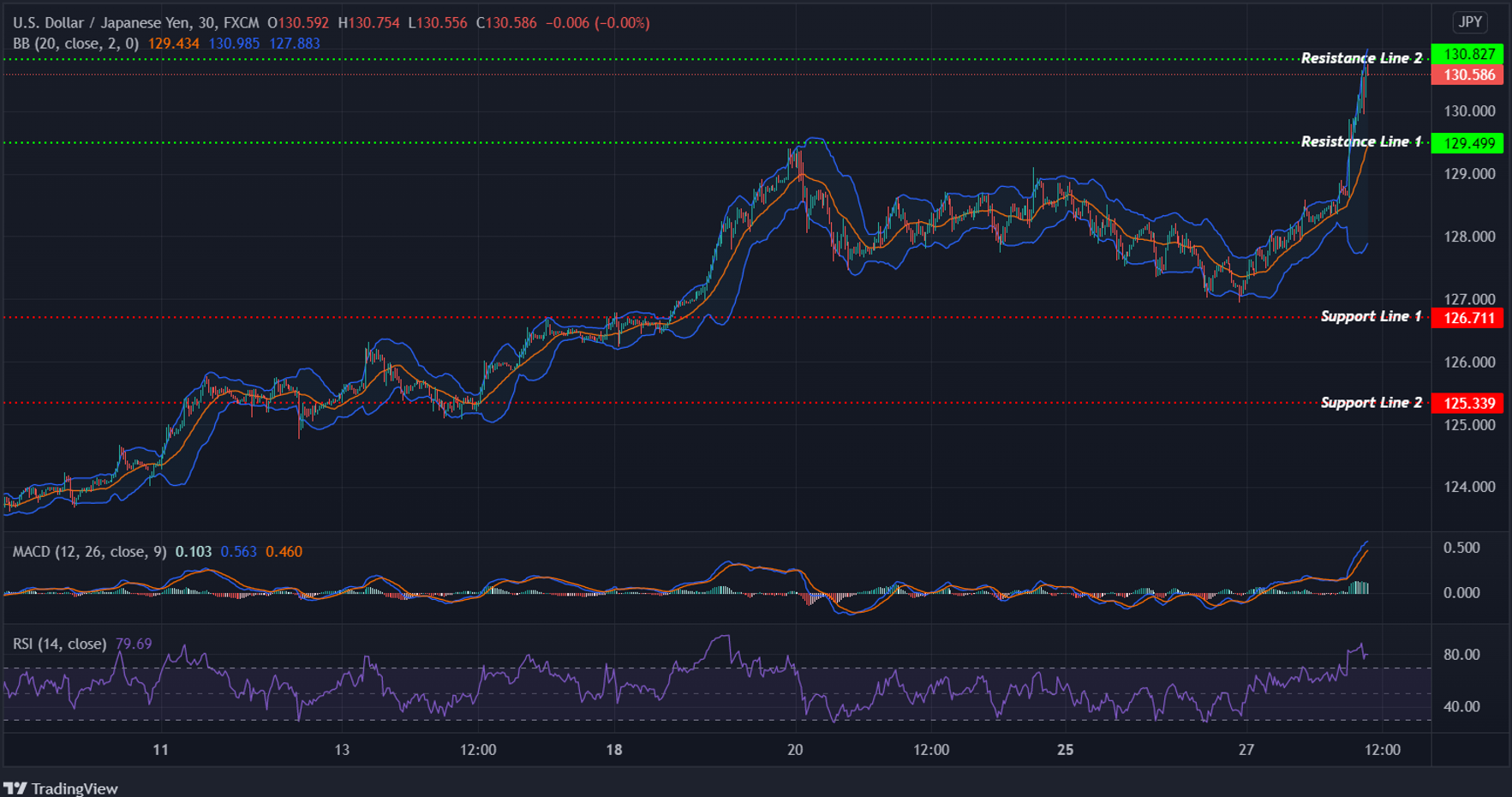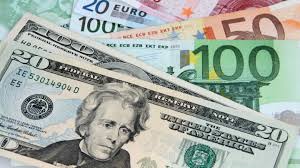INTRADAY TECHNICAL ANALYSIS 28 APRIL (observation as of 08:20 UTC)
[EURUSD]
Important Levels to Watch for:
- Resistance line of 1.06617 and 1.07159.
- Support line of 1.04863 and 1.04321.
Commentary/ Reason:
The euro slid to a more than five-year low of $1.04829, bringing its losses for the month to 5%, which would be its worst pummeling since early 2015. It was last stood at $1.05408.
The euro nosedive after Russia halted gas supplies to Bulgaria and Poland, and investors fretted more about the region's economy. Russia cut the flow of natural gas to Bulgaria and Poland for rejecting its demand to pay in roubles, taking direct aim at European economies. This led investors to sell euros and snap up U.S. dollars.
EUR/USD was also under pressure on weak Eurozone consumer confidence reports on Wednesday and after Germany cut its 2022 GDP estimate for this year.
Central bank tightening, a slowdown in China due to lockdowns in Shanghai, and Q1 earning reports also kept investors concerned and piling into safe haven currencies.
Higher T-note yields Thursday supported gains in the dollar.
The EUR/USD pair has bounced from the intraday low. Technical readings in the daily chart support additional declines, although a corrective advance or a consolidative stage is not out of the picture after five days of sustained losses.
Bearish trend is still firmly in place, and any corrective advance will likely be seen as a selling opportunity. At the time being, the daily 20 SMA keeps heading firmly lower below the longer ones, while technical indicators maintain their bearish slopes, even with the RSI within oversold readings.
To be watch for dollar today will be data on U.S. GDP. Investors also eyed the Fed meeting next week. Markets have been fretting that an aggressive pace of tightening by the Fed could derail the global economy, which has only just started to recover from the pandemic. The Fed is expected to raise rates by a half a percentage point at each of its next two meetings.

[USDCHF]
Important Levels to Watch for:
- Resistance line of 0.97225 and 0.97569.
- Support line of 0.96111 and 0.95767.
Commentary/ Reason:
The dollar steadied against the Swiss franc on Thursday, remained at an almost two-year top touched earlier in the day.
The greenback was last at 0.96853 franc.
The pair remains elevated amidst a risk-off market sentiment, triggering a flight to safe-haven assets. China’s COVID-19 woes grabbed some attention, with news of Shanghai’s lockdown measures kept traders anxious. In the meantime, the Ukraine-Russia conflict escalated as Russian company Gazprom halted natural gas exports to Poland and Bulgaria.
The USD/CHF also has been driven higher by a strong rally in U.S. dollar thanks to the Federal Reserve turning increasingly hawkish.
The USD/CHF pair to support the continuation of the bullish trend in the upcoming sessions, noting that our next target extends to 0.9722, around the intraday high. The EMA50 supports the expected rise, which will remain valid conditioned by the price stability above 0.9611.

[USDJPY]
Important Levels to Watch for Today:
- Resistance line of 129.499 and 130.827.
- Support line of 126.711 and 125.339.
Commentary/ Reason:
The dollar rose past the psychological level of 130 yen on Thursday for the first time since 2002, after the Bank of Japan doubled down on its super-low yield policy.
That saw the U.S. currency soar to as high as 130.700 against the Japanese yen. It was last sitting at 130.586, up 1.70%. It also brought the dollar's gains this month to almost 7%, its best month since late 2016.
The Bank of Japan on Thursday doubled down on its commitment to maintain its massive stimulus programme and a pledge to keep interest rates ultra-low, reinforcing its resolve to support a fragile, triggering a fresh sell-off in the yen and sending government bonds rallying.
The central bank also said it will offer to buy unlimited amount of 10-year government bonds to defend an implicit 0.25% yield cap around its zero target every market day. That is a stark contrast with tightening almost everywhere else and the decision drove the yen to a two-decade low on the U.S. dollar, while Japanese government bonds rallied.
The Japanese currency has for weeks weakened against the dollar; with expectations the BoJ is set to be relatively slower in normalizing monetary policy as compared with peers such as the U.S. Federal Reserve. Yields on 10-year notes have climbed 48 bps this month alone to 2.83%, opening a gulf between Japanese debt.
The USD/JPY pair rebound bullishly just above the support line and return to the main bullish channel again, which stops the correctional bearish scenario and lead the price to resume the bullish trend again, on its way to achieve positive targets above 130. The bullish bias will be suggested in the upcoming sessions.

[GBPUSD]
Important Levels to Watch for:
- Resistance line of 1.27705 and 1.28530.
- Support line of 1.25035 and 1.24210.
Commentary/ Reason:
Sterling was flat at $1.25460 but remained pressured and hovering just above the 21-month low it recorded on Wednesday.
Sterling has dropped more than 2% on the dollar so far this week as soft retail sales data prompted a re-think of Britain's rates outlook, to a possible slowdown in the expected upward movement of interest rates.
Fears about the economic impact of China's COVID-19 lockdowns and as an aggressive pace of U.S. rate hikes also sent investors scrambling for safety, benefitted to the greenback. Protracted Russia-Ukraine conflict and Europe energy crisis also continue to weigh on the market mood.
The GBP/USD pair keep the bearish trend scenario valid and active on the intraday and short-term basis, supported by the negative pressure formed by the EMA50, waiting to visit 1.2503 that represents our next target, while the continuation of the bearish wave depends on the price stability below 1.2770.















